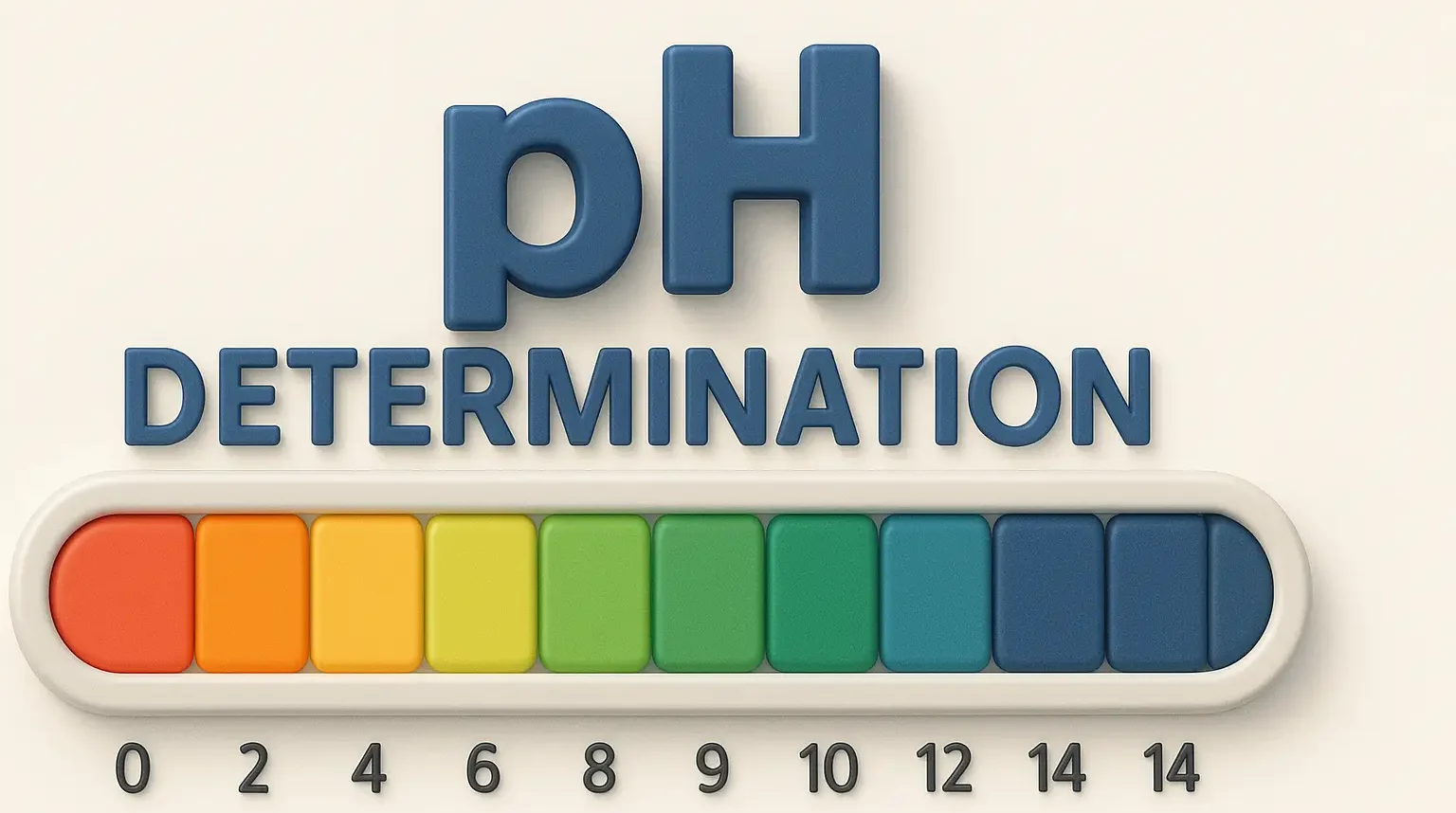Accurate pH Determination measurement is essential in laboratories, industry, and research.

1. Electrometric Methods of pH Determination
-
Principle:
- Based on the measurement of the electromotive force (EMF) of a galvanic cell that includes a pH-sensitive electrode.
-
Components:
- Glass Electrode: Sensitive to hydrogen ion activity; develops a potential proportional to pH.
- Reference Electrode: Provides a constant potential; commonly a silver/silver chloride or calomel electrode.
- pH Meter: Reads the potential difference and displays the pH.
-
Procedure:
- Calibrate the pH meter using standard buffer solutions of known pH.
- Rinse electrodes with distilled water.
- Immerse electrodes in the test solution.
- Record the stable pH reading.
-
Advantages:
- High accuracy and precision.
- Suitable for a wide pH range.
- Can measure pH in colored or turbid solutions.
-
Applications:
- Research laboratories.
- Quality control in manufacturing.
- Clinical diagnostics.
2. Colorimetric Methods
-
Principle:
- Utilize pH indicators that change color depending on the pH of the solution.
-
Indicators:
- Weak acids or bases with different colors in protonated and deprotonated forms.
- Common indicators include litmus, phenolphthalein, methyl orange, and bromothymol blue.
-
Procedure:
- Add a few drops of indicator to the test solution.
- Observe the color change.
- Compare the color to a standard pH color chart.
-
Advantages:
- Simple and cost-effective.
- Quick estimation of pH.
-
Limitations:
- Less precise than electrometric methods.
- Subjective interpretation of color.
- Not suitable for colored or opaque solutions.
-
Applications:
- Educational demonstrations.
- Field testing where equipment is unavailable.
Advertisements

